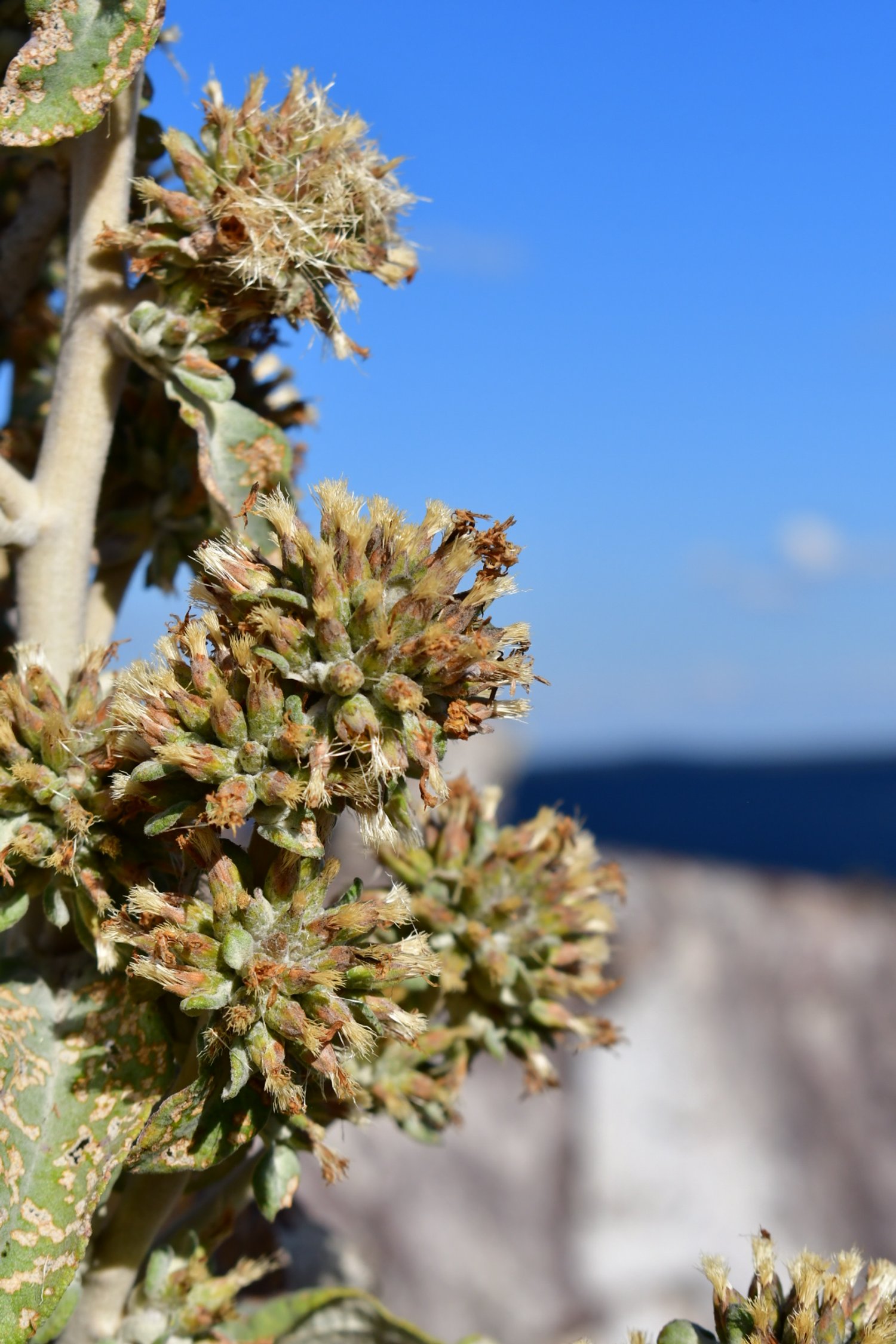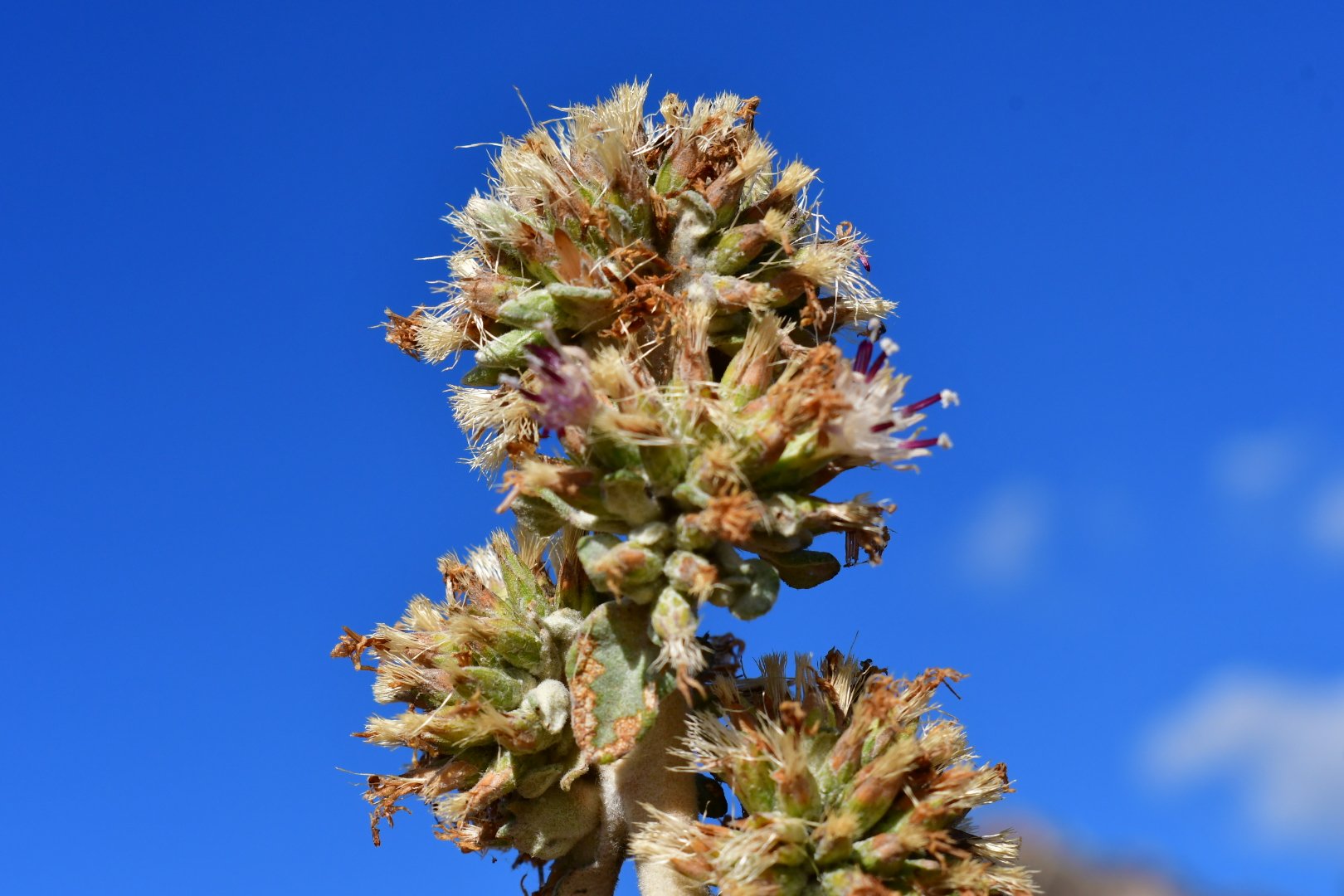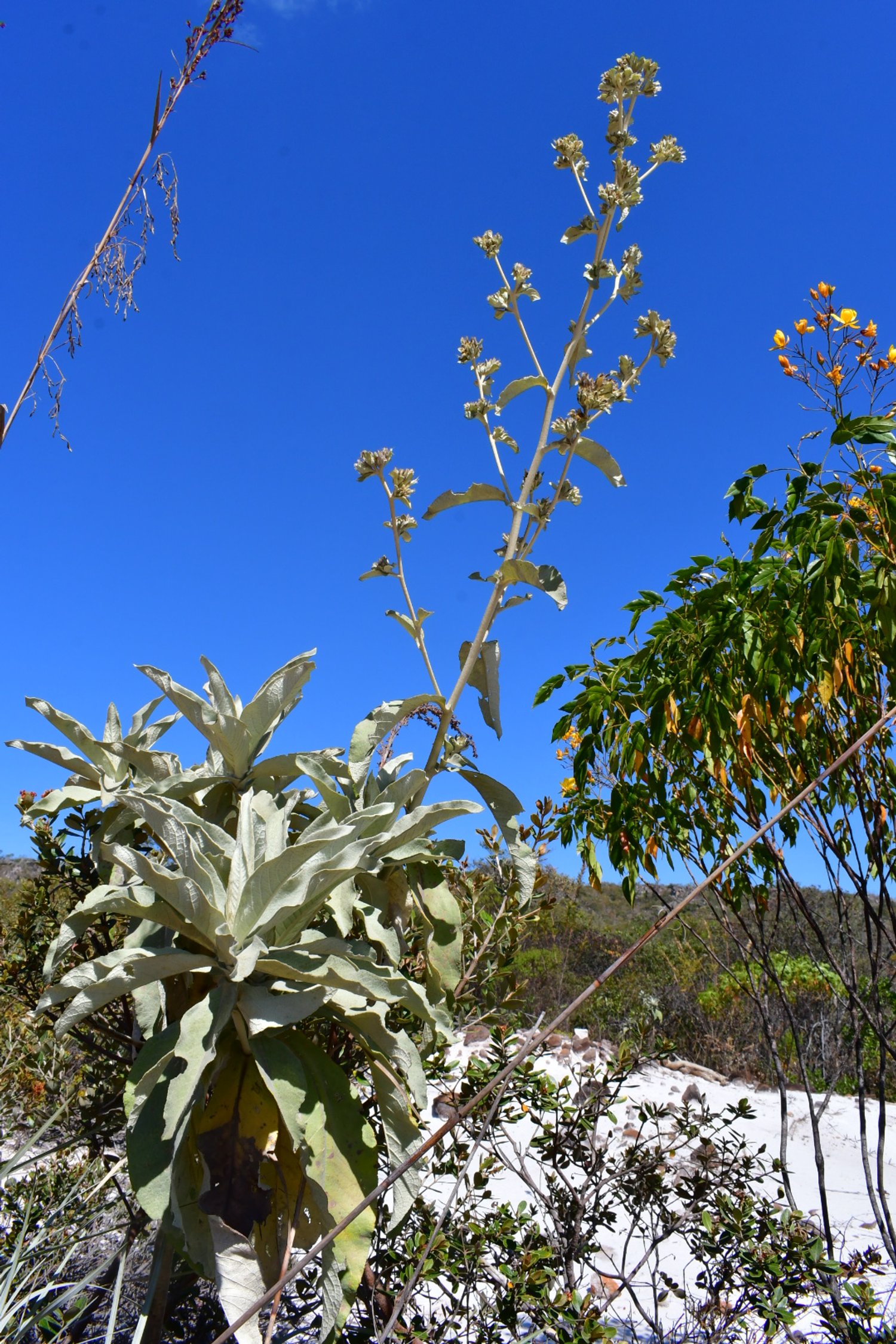Not Your Midwest Ironweeds...
Maschalostachys markgraffii in the rockfields (Campos Rupestres) of Northern Minas Gerais, Brazil…
This one really stumped me. Generally speaking, seeing purple anther tubes on the florets of a plant in Asteraceae in Brazil is a good give-away for the ironweed subfamily, Vernonioideae. That's not saying much however, as that subfamily is exceptionally species-rich in the Cerrado and Atlantic Forest biomes of Eastern Brazil.
What really blew my mind were both the habit of this species and the habitat itself. It was essentially growing in a quartzite sandstone boulderfield surrounded by drought-hardy aroids, orchids, and cacti.
This plant was basically a 20' foot tall monocaulous flagpole with no vegetation save for some leaves at the top. I was only able to inspect it by standing on the sketchy ledge of a huge boulder that it was growing at the base of.
The flowers themselves were syncephalous, which in Asteraceae means "a head of heads".... A flower head that is itself composed of flowerheads (capitula), each one bearing hundreds of tiny flowers with - again - the purple fused anther tubes that are usually (but not always) indicative of Vernonioideae.
I only figured out what this was after a friend who's a synantherologist (one who studies Asteraceae) at a university in Brazil told me the genus - Maschalostachys. The genus (as of now) only has two species in it. Both are from the Cerrrado biome, and both are weird as hell and incredibly cool.
https://www.researchgate.net/publication/331952463_A_synopsis_of_Lychnophorinae_Asteraceae_Vernonieae














